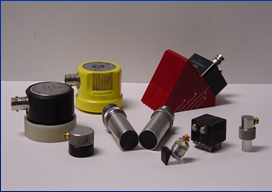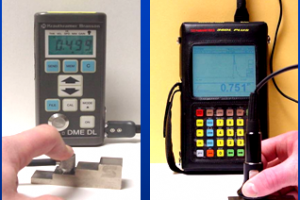ULTRASONIC TESTING
INTRODUCTION:
- This module presents an introduction to the NDT method of ultrasonic testing.
- Ultrasonic testing uses high frequency sound energy to conduct examinations and make measurements.
- Ultrasonic examinations can be conducted on a wide variety of material forms including castings, forgings, welds, and composites.
A considerable amount of information about the part being examined can be collected, such as the presence of discontinuities, part or coating thickness; and acoustical properties can often be correlated to certain properties of the material
OUTLINE FOR ULTRASONIC TESTING :
- Basic Principles of sound generation
- Transducers
- Instrumentation
- Advantages and Limitations
BASIC PRINCIPLES OF SOUND:
- Sound is produced by a vibrating body and travels in the form of a wave.
- Sound waves travel through materials by vibrating the particles that make up the material.
- The pitch of the sound is determined by the frequency of the wave (vibrations or cycles completed in a certain
period of time). - Ultrasound is sound with a pitch too high to be detected by the human ear.
ULTRASONIC GENERATION IN ULTRASONIC TESTING:
Ultrasound is generated with a transducer in ultrasonic testing.
PRINCIPLES OF ULTRASONIC GENERATIION:
- Ultrasonic waves are introduced into a material where they travel in a straight line and at a constant speed until they encounter a surface.
- At surface interfaces some of the wave energy is reflected and some is transmitted.
- The amount of reflected or transmitted energy can be detected and provides information about the size of the reflector.
TRANSDUCERS IN ULTRASONIC TESTING:
- Transducers are manufactured in a variety of forms, shapes and sizes for varying applications.

INSTRUMENTATION IN ULTRASONIC TESTING:
- In Ultrasonic testing, Ultrasonic equipment is usually purchased to satisfy specific inspection needs, some users may purchase general purpose equipment to fulfill a number of inspection applications.

ADVANTAGES OF ULTRASONIC TESTING:
- Ultrasonic testing is sensitive to small discontinuities both surface and subsurface.
- Depth of penetration for flaw detection or measurement is superior to other methods.
- Only single-sided access is needed when pulse-echo technique is used.
- Ultrasonic testing has high accuracy in determining reflector position and estimating size and shape.
- Minimal part preparation required.
- In Ultrasonic testing, Electronic equipment provides instantaneous results.
- Detailed images can be produced with automated systems.
- Has other uses such as thickness measurements, in addition to flaw detection.
LIMITATIONS OF ULTRASONIC TESTING:
- In Ultrasonic testing, surface must be accessible to transmit ultrasound.
- Skill and training is more extensive than with some other methods.
- Ultrasonic testing normally requires a coupling medium to promote transfer of sound energy into test specimen.
- Materials that are rough, irregular in shape, very small, exceptionally thin or not homogeneous are difficult to inspect.
- Cast iron and other coarse grained materials are difficult to inspect in ultrasonic testing due to low sound transmission and high signal noise.
- Linear defects oriented parallel to the sound beam may go undetected.
- Reference standards are required for both equipment calibration, and characterization of flaws in Ultrasonic testing.
To Learn Ultrasonic Testing Kindly Contact Us…
Leave a Reply